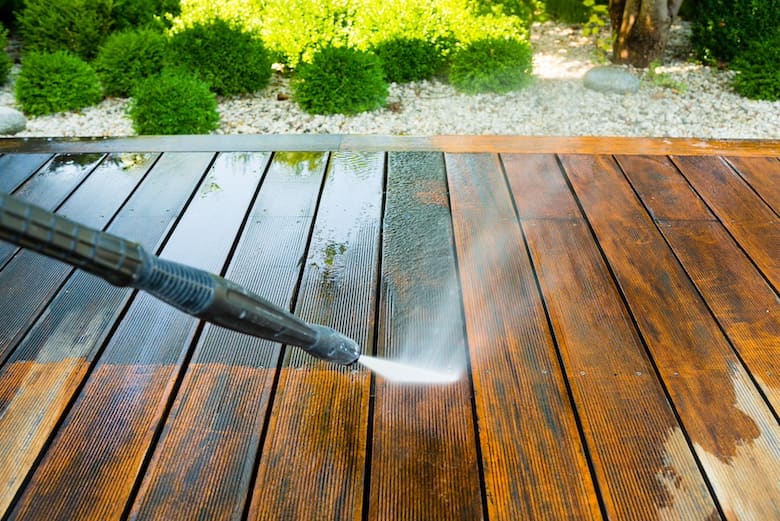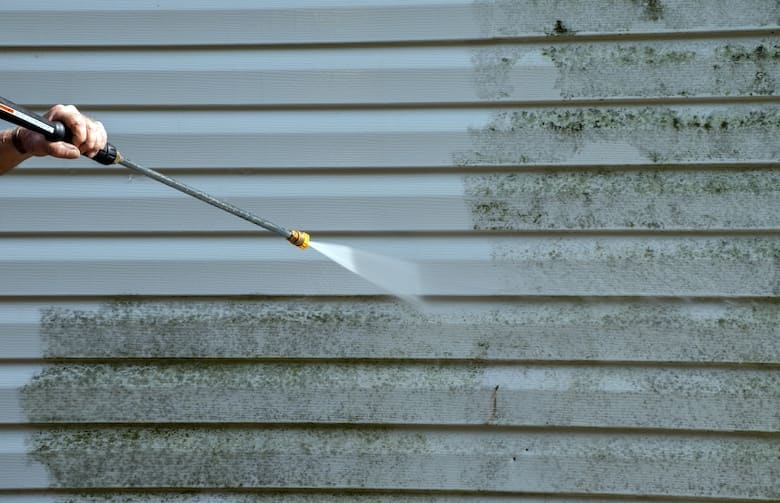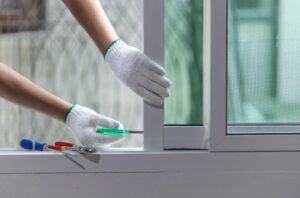Are you planning to do pressure washing at home soon? Keep in mind that safety should always be your top priority. Continue reading below to learn more about at-home pressure washing safety.
Gear Up: The Importance Of Wearing Protective Gear When Doing Pressure Washing At Home
Before hopping on doing pressure washing Austin at home, make sure that you have the appropriate safety gear prepared and ready to go. It’s your essential first line of defense in case of any accidents.
Prepare the following items for your safety gear kit: protective goggles, a pair of sturdy cleaning gloves, appropriate footwear and clothing, headphones for ear protection, and so on.
Always wear goggles to shield your eyes from flying debris. Meanwhile, having a pair of gloves protects your hands from the strong water pressure and stingy cleaning chemicals. Wear appropriate footwear and clothing, such as rubber boots and comfortable clothing, to promote safety from slippery floors and splashes of dirt.
Finally, having ear protection, like a pair of work earphones, is helpful in protecting from prolonged exposure to loud sounds caused by power tools such as pressure washers.
Safe And Effective Pressure Washing Techniques
Remember, with great power comes great responsibility. Before proceeding with your at-home pressure washing job, check out the following key safety cleaning tips:
- Always point the nozzle away from yourself, others, and pets.
- Maintain a safe distance from the surface you’re cleaning. Generally, stay at least three feet away.
- Work from top to bottom to avoid streaking and allow dirt to flow downward.
- Never hold the trigger down continuously. Pulse the trigger in short bursts to maintain control and prevent fatigue.
- Be mindful of electrical cords and keep them away from water. Unplug the pressure washer before making any adjustments or repairs.
- Store your pressure washer properly when not in use. Drain the water from the pump and hoses to prevent freezing or damage.
- Pressure washing can be noisy. Avoid early mornings or late evenings when neighbors might be trying to relax if you’re doing at-home pressure washing.
- Be mindful of overspray that could drift onto nearby properties, and cover plants or vulnerable surfaces if necessary.
- Don’t prevent yourself from taking breaks. Pressure washing can be tiring, so pace yourself and listen to your body to avoid fatigue and injury.
Know More About Your Pressure Washer’s Different Power Levels

Pressure washers pack a punch. Each one comes with various power settings that you should know about. Understanding your pressure washer machine’s PSI (pounds per square inch) and GPM (gallons per minute) is crucial.
Keep in mind the following: a higher PSI tackles tough grime but can also damage delicate surfaces. A general rule of thumb when doing pressure washer cleaning is to start low and slowly work your way up, testing on an inconspicuous area first.
Check out the different PSI settings below and each one’s recommended cleaning conditions:
- 1500-2500 PSI: Ideal for patios, decks, and lightly painted surfaces.
- 2500-3000 PSI: Best for heavily stained concrete, vinyl siding, and brick.
- 3000+ PSI: Reserved for heavy-duty jobs like graffiti removal or stripping paint.
Get To Know Your Pressure Washer’s Nozzle: Choosing The Right Tool For The Cleaning Job
Think of the nozzle as your pressure washer’s brushstroke. Different nozzles offer varying spray patterns and intensities, tailored to specific cleaning tasks.
Below is a quick guide you can use to pick the right nozzle for the appropriate cleaning circumstance:
- Fan spray offers broad coverage for general cleaning, ideal for decks and siding;
- Pencil spray has focused power for tough stains and crevices;
- Soap nozzle applies cleaning detergent with the spray; and
- The rotary nozzle has a powerful spinning action for stubborn grime and paint removal.
Remember, always start with a wider spray pattern and adjust to a narrower one if needed – this is to avoid unwanted surface etching on delicate surfaces or kickback.
Get To Know Other Pressure Washing Essentials: Cleaning Soaps 101
Your pressure washing journey doesn’t solely rely on your pressure washer’s nozzles alone. Understanding cleaning chemicals and pressure washer accessories can take your pressure washing to a whole new level.
For starters, the right cleaning solution can make a world of difference. Opt for biodegradable, non-toxic detergents specifically formulated for pressure washers. Avoid harsh chemicals that can damage surfaces and harm the environment. Consider specialized cleaners for tackling specific cleaning needs like grease stains, algae growth, or mildew.
Winning Over Common Cleaning Challenges
Different home conditions and surface types require bespoke pressure washing. Check out the following examples to help you navigate different pressure washing cleaning scenarios:
- Cleaning Hallways Filled With Dirt And Grime: Begin with a low-pressure fan spray to loosen dirt and debris. Use a soft brush for gentle scrubbing, and pay special attention to crevices where grime tends to hide. Finish with a rinse to remove soap residue and leave your deck looking refreshed and welcoming.
- Cleaning Your Home’s Siding: Vinyl siding requires a gentle touch. A low-pressure fan spray and a mild detergent are your allies. Avoid aiming directly at seams or joints, as the force can cause damage. For stubborn stains, use a pencil spray with targeted bursts, keeping a safe distance to prevent gouging.
- Cleaning Your Concrete Patios And Walkways: For patios and walkways, you can unleash a bit more pressure. A medium-pressure fan spray works well for general cleaning, while a rotary brush tackles tough stains and uneven surfaces. Be mindful of expansion joints and avoid excessive pressure, as it can crack concrete.
- Cleaning Your Home Windows: Treat windows delicately when cleaning. Use a low-pressure, wide-fan spray and a specialized window cleaner to avoid streaks and etching. Don’t forget to clean window screens from both sides for a sparkling finish as well.
- Power Washing Unwanted Wall Graffiti: Vandals painting graffiti on your walls are a headache, indeed. Use a specialized nozzle and test on a small, inconspicuous area first to avoid etching the surface.
- Car Cleaning Using A Pressure Washer: With proper nozzles and detergents, pressure washing can transform your car, but caution is crucial. Avoid sensitive areas like the engine and headlights, and use gentle pressure on painted surfaces to avoid chipping.
At-Home Pressure Washer Troubleshooting 101
Issues may arise when you’re doing pressure washing at home. Nonetheless, don’t let them prevent you from finishing your intended goal – to succeed in your at-home pressure washing job.
Check out some of the helpful tips below:
- Low water pressure could be due to clogged nozzles, kinks in the hose, or a failing pump. Check for blockages, straighten the hose, and consult your user manual for pump troubleshooting steps.
- Minor leaks around connections are common. Tighten connections and replace worn gaskets if necessary. For more significant leaks, consult a qualified technician.
- Engine issues like starting failures or uneven running can happen from time to time. Refer to your manual for troubleshooting steps and consider professional maintenance if needed.
Pressure Washer Unit Maintenance: Keeping Your Pressure Washer In Tip-Top Shape
Regular maintenance ensures your pressure washer remains operational for years to come. Here are some simple tips to help you on how to properly maintain your pressure washer at home:
- Clean the nozzle and filter regularly. This prevents clogs and ensures optimal performance.
- Lubricate moving parts according to the manufacturer’s instructions.
- Store the pressure washer in a cool, dry place.
- Winterize the unit if you live in a freezing climate.
In Conclusion
Knowledge is power. If you’re equipped with the right information about pressure washers and pressure washing safety at home, you’ll be able to safely and properly carry out your pressure washing tasks with little to no hiccups.
Keep in mind the above mentioned points to help you uphold pressure washing safety in your home. At the end of the day, if there’s an issue you can’t seem to solve regarding pressure washers, don’t hesitate to reach out to a pressure-washing professional.





